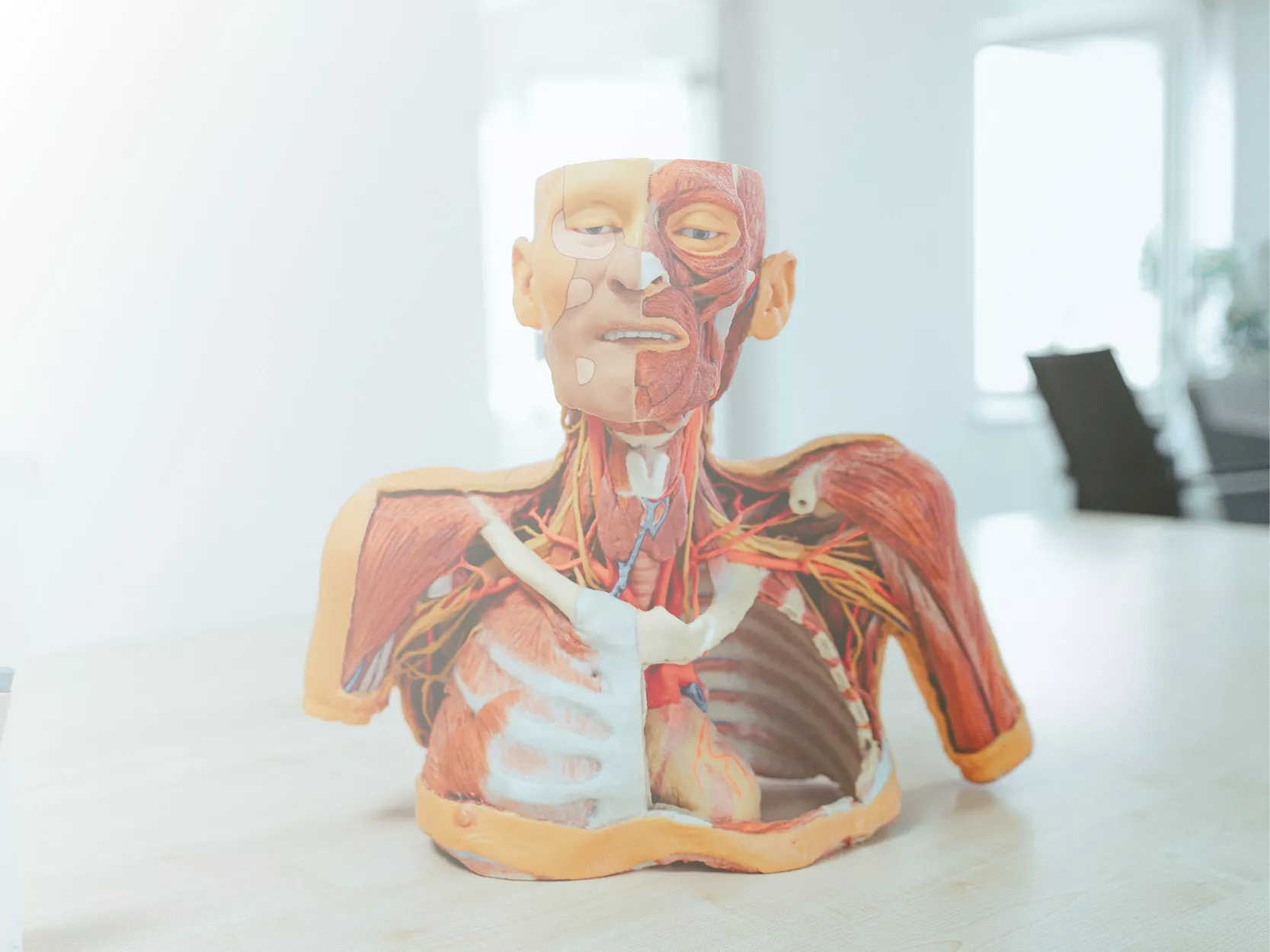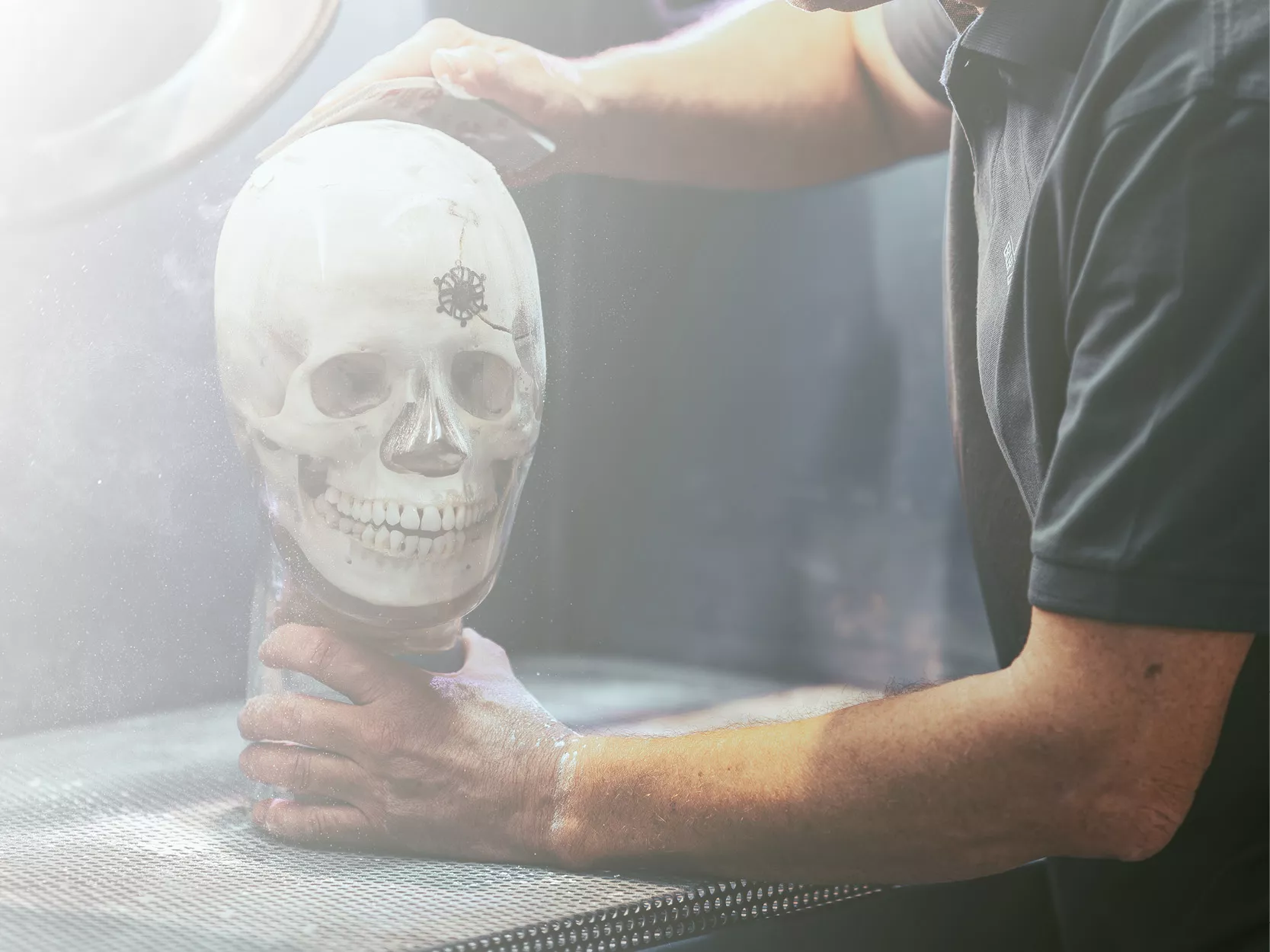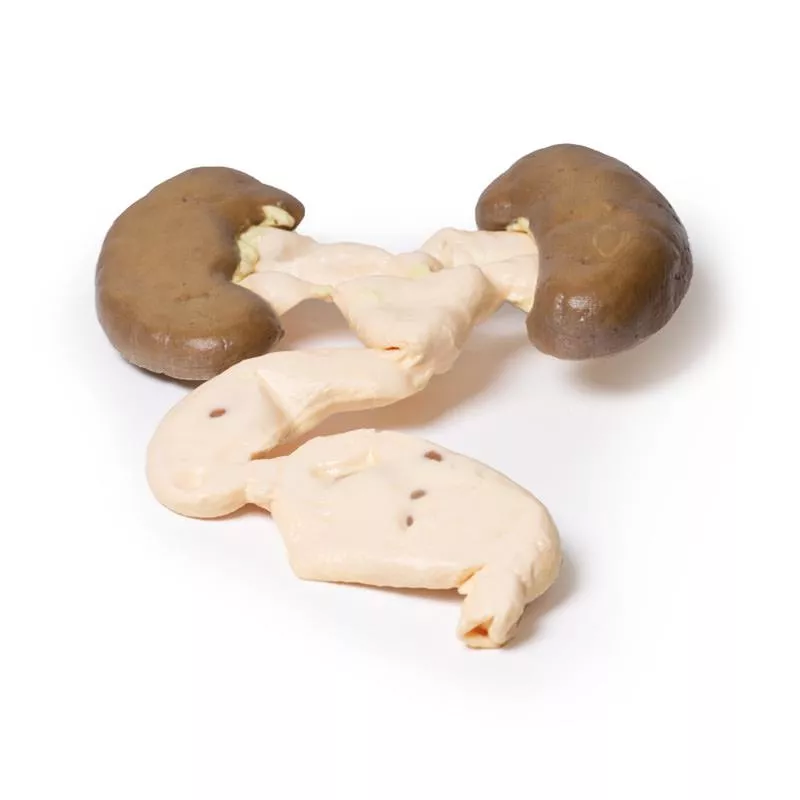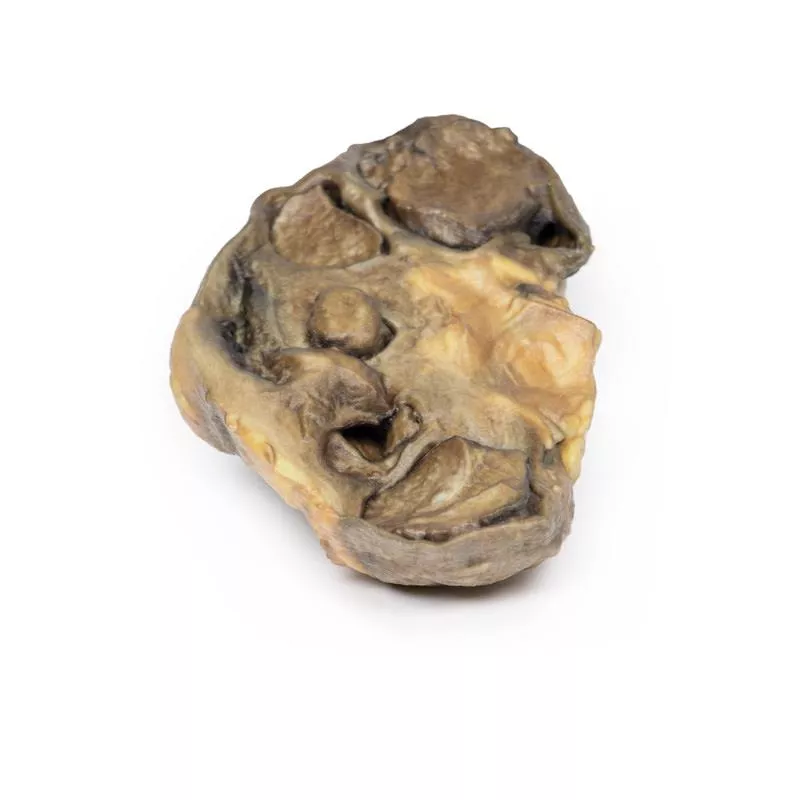Produktinformationen "Hydronephrosis Hydroureter"
Klinische Vorgeschichte
Ein 49-jähriger Mann stellte sich mit 6 Wochen Müdigkeit, häufigerem Wasserlassen und Hämaturie vor. Er klagte zudem über gelegentliche Schmerzen in der linken Flanke. Ultraschall zeigte eine ausgeprägte Hydronephrose und Hydroureter, verursacht durch mehrere Harnleitersteine, die den Uretero-Vesikalen Übergang blockierten. Er wurde linksseitig nephrektomiert und ureterektomiert und erholte sich erfolgreich.
Pathologie
Das entfernte linke Nieren- und Ureterstück zeigt eine stark hydronephrotische Niere mit deutlicher Atrophie des Nierenparenchyms. Der Harnleiter ist stark erweitert und distal mit mehreren kleinen braun-schwarzen Steinen mit scharfen Kanten gefüllt, sogenannten Calciumoxalat-Steinen. Dies ist ein Beispiel für Hydronephrose und Hydroureter durch Harnleitersteine.
Weitere Informationen
Hydronephrose ist die Erweiterung von Nierenbecken und Kelchen durch eine Harnabflussbehinderung im Harntrakt. Ursachen sind u.a. angeborene Fehlbildungen, Steine, Tumoren, Entzündungen oder Prostataerkrankungen. Symptome hängen von Ursache, Dauer, Lokalisation und Ausmaß der Blockade ab. Unbehandelt führt der Druckanstieg zu Nierenatrophie, ischämischen Schäden und Vernarbungen. Die Diagnose erfolgt hauptsächlich mittels Ultraschall, ergänzt durch CT oder Urogramm. Die Therapie besteht meist in operativer Entfernung der Blockade, z.B. Nephrostomie, Stent oder Katheter je nach Lage.
Ein 49-jähriger Mann stellte sich mit 6 Wochen Müdigkeit, häufigerem Wasserlassen und Hämaturie vor. Er klagte zudem über gelegentliche Schmerzen in der linken Flanke. Ultraschall zeigte eine ausgeprägte Hydronephrose und Hydroureter, verursacht durch mehrere Harnleitersteine, die den Uretero-Vesikalen Übergang blockierten. Er wurde linksseitig nephrektomiert und ureterektomiert und erholte sich erfolgreich.
Pathologie
Das entfernte linke Nieren- und Ureterstück zeigt eine stark hydronephrotische Niere mit deutlicher Atrophie des Nierenparenchyms. Der Harnleiter ist stark erweitert und distal mit mehreren kleinen braun-schwarzen Steinen mit scharfen Kanten gefüllt, sogenannten Calciumoxalat-Steinen. Dies ist ein Beispiel für Hydronephrose und Hydroureter durch Harnleitersteine.
Weitere Informationen
Hydronephrose ist die Erweiterung von Nierenbecken und Kelchen durch eine Harnabflussbehinderung im Harntrakt. Ursachen sind u.a. angeborene Fehlbildungen, Steine, Tumoren, Entzündungen oder Prostataerkrankungen. Symptome hängen von Ursache, Dauer, Lokalisation und Ausmaß der Blockade ab. Unbehandelt führt der Druckanstieg zu Nierenatrophie, ischämischen Schäden und Vernarbungen. Die Diagnose erfolgt hauptsächlich mittels Ultraschall, ergänzt durch CT oder Urogramm. Die Therapie besteht meist in operativer Entfernung der Blockade, z.B. Nephrostomie, Stent oder Katheter je nach Lage.
Erler-Zimmer
Erler-Zimmer GmbH & Co.KG
Hauptstrasse 27
77886 Lauf
Germany
info@erler-zimmer.de
Achtung! Medizinisches Ausbildungsmaterial, kein Spielzeug. Nicht geeignet für Personen unter 14 Jahren.
Attention! Medical training material, not a toy. Not suitable for persons under 14 years of age.







































